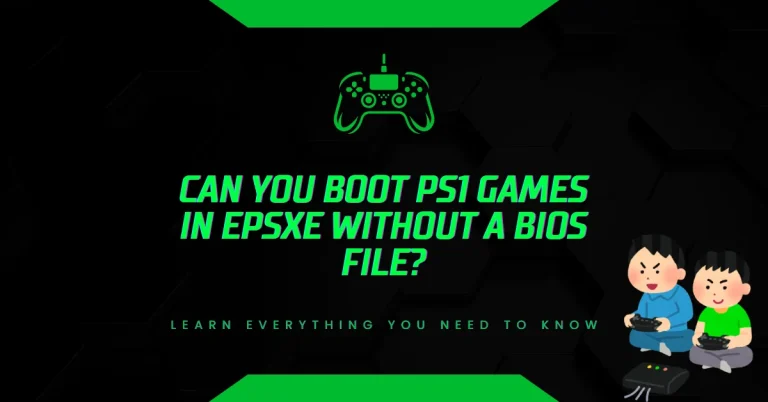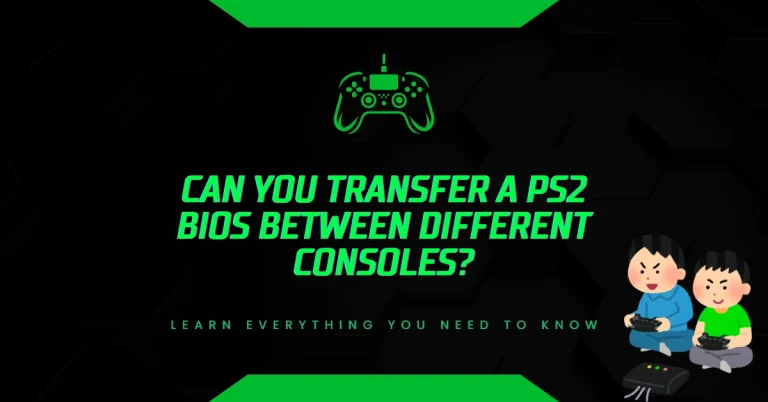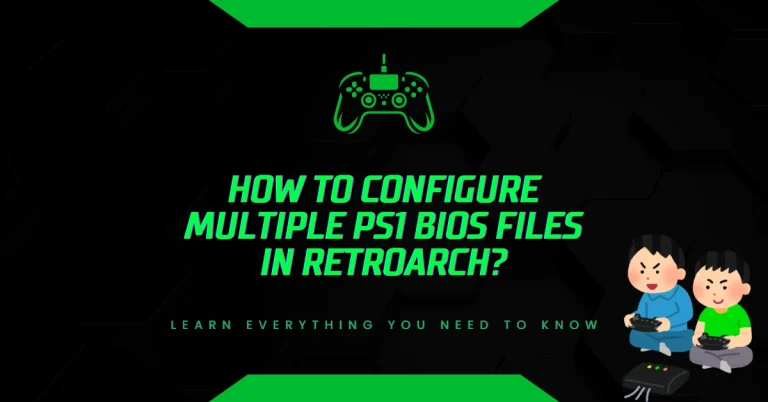Why Do Some BIOS Files Include Multiple ROM Components?
If your system fails to boot or hardware behaves oddly after a BIOS update, the issue may lie in how ROM components are structured. Understanding why BIOS files include multiple ROM segments helps prevent firmware errors and ensures compatibility across chipsets, boards, and embedded controllers.
What Are ROM Components Inside BIOS Files?
A BIOS file may contain multiple ROM components, each serving a specific function. These components are binary segments that target different parts of the system.
Common ROM Components Include:
| ROM Component | Purpose |
|---|---|
| Main BIOS Image | Core firmware for motherboard and CPU initialization |
| EC Firmware | Controls Embedded Controller (keyboard, battery, fan) |
| ME Firmware | Intel Management Engine for remote access and security |
| VGA BIOS | Initializes onboard or discrete graphics card |
| LAN Option ROM | Enables PXE booting over network |
| RAID Option ROM | Supports RAID configurations |
| Boot Block | Recovery firmware for failed BIOS updates |
Each ROM segment is tailored for a specific chip or subsystem. Combining them ensures full hardware compatibility and feature support.
Why Are Multiple ROM Components Needed?
Modern motherboards include multiple controllers and chipsets. A single BIOS image must support all of them. Here’s why multiple ROMs are essential:
1. Hardware Diversity
- A motherboard may include an Intel chipset, a Realtek LAN controller, and an NVIDIA GPU.
- Each device requires its own initialization code.
- BIOS files bundle these codes into separate ROM segments.
2. Modular Firmware Design
- Separating ROMs allows targeted updates.
- For example, updating only the EC firmware without touching the main BIOS.
- This reduces risk and improves maintainability.
3. Recovery and Redundancy
- Boot Block ROM ensures recovery if the main BIOS fails.
- Some systems include dual BIOS chips for failover protection.
How BIOS Files Are Structured?
BIOS files follow a modular layout, often using Intel’s Firmware Interface Table (FIT) or AMD’s AGESA framework.
Key Structural Elements:
- Header: Metadata about the BIOS version, vendor, and checksum.
- ROM Segments: Each with a unique identifier and memory address.
- Padding/Alignment: Ensures proper loading into flash memory.
Real-World Example: Intel BIOS with ME Firmware
Intel-based systems often include ME (Management Engine) firmware. It runs independently of the CPU and OS.
- ME firmware enables remote management, secure boot, and power control.
- It’s stored in a separate ROM segment within the BIOS file.
- Updating ME requires special tools like Intel Flash Programming Tool (FPT).
Failing to include ME firmware can disable remote access or cause boot errors.
BIOS Flashing Tools and ROM Handling
Different vendors use different tools to flash BIOS files. These tools recognize and handle multiple ROM segments.
Common Tools:
| Vendor | Flash Tool Name | ROM Handling Capability |
|---|---|---|
| ASUS | EZ Flash / AFUDOS | Supports EC, ME, Boot Block |
| Gigabyte | Q-Flash / EFI Flash | Handles modular ROMs |
| MSI | M-Flash / Flash BIOS | Detects multiple segments |
| Intel | FPT / ME Tools | Required for ME firmware |
These tools parse the BIOS file, identify ROM components, and flash them to the correct memory regions.
Embedded Controller (EC) Firmware Explained
The Embedded Controller manages low-level tasks like keyboard input, battery charging, and fan speed.
- EC firmware is stored in a separate ROM segment.
- It communicates with the main BIOS via SMBus or LPC interface.
- Updating EC firmware can fix battery issues or keyboard malfunctions.
Some laptops require EC updates alongside BIOS updates to ensure full compatibility.
VGA BIOS and Graphics Initialization
The VGA BIOS initializes the graphics card before the OS loads GPU drivers.
- Discrete GPUs (e.g., NVIDIA, AMD) include their own VGA BIOS.
- Integrated graphics (e.g., Intel UHD) rely on motherboard VGA ROM.
- VGA BIOS sets screen resolution and enables video output during POST.
Missing or corrupted VGA ROM can result in a black screen during boot.
LAN and RAID Option ROMs
These ROMs enable advanced boot options and storage configurations.
LAN Option ROM:
- Supports PXE booting (booting from network).
- Used in enterprise environments for remote OS deployment.
RAID Option ROM:
- Enables RAID setup before OS installation.
- Required for systems using Intel RST or AMD RAIDXpert.
These ROMs are often optional and can be disabled in BIOS settings.
Boot Block and Recovery Mechanisms
The Boot Block is a critical ROM segment used for recovery.
- It contains minimal code to initialize flash tools and restore BIOS.
- If the main BIOS is corrupted, Boot Block can trigger recovery mode.
- Some systems use dual BIOS chips for automatic failover.
This ensures system resilience during failed updates or power loss.
Statistics and Industry Data
- According to Intel, over 90 percent of enterprise systems include ME firmware in BIOS.
- A 2023 survey by TechPowerUp found that 78 percent of motherboard BIOS files contain EC firmware.
- Dual BIOS systems are standard in Gigabyte Ultra Durable series since 2015.
These numbers show how common multi-ROM BIOS files are in modern computing.
Security Implications of Multiple ROMs
Each ROM segment can be a security target. Vendors implement protections:
- Digital signatures verify ROM integrity.
- Secure Boot checks firmware authenticity.
- Rollback prevention blocks older, vulnerable ROMs.
ME firmware, in particular, has faced scrutiny due to its deep system access. Intel now offers ME Cleaner tools for disabling unused ME features.
How Developers and Technicians Use Multi-ROM BIOS Files
BIOS engineers and system integrators rely on multi-ROM files for:
- Custom firmware builds for OEM systems.
- Debugging hardware issues by isolating ROM segments.
- Firmware validation using checksum and hash tools.
Tools like UEFI Tool, MMTool, and Phoenix BIOS Editor allow inspection and editing of ROM components.
Compatibility and Update Challenges
Updating BIOS with multiple ROMs requires caution:
- Flashing the wrong EC or ME firmware can brick the system.
- Always use vendor-approved tools and match firmware versions.
- Backup current BIOS before flashing.
Some vendors provide split BIOS packages, separating ROMs for manual flashing.
Summary of Key Takeaways
- BIOS files often include multiple ROM components to support diverse hardware.
- Each ROM segment targets a specific subsystem: EC, ME, VGA, LAN, RAID, Boot Block.
- Modular design improves compatibility, recovery, and update flexibility.
- Flashing tools handle ROM segmentation automatically.
- Security and stability depend on proper ROM integration and validation.
Final Thoughts
Understanding the structure and purpose of multi-ROM BIOS files is essential for technicians, developers, and advanced users. It ensures safe updates, better hardware support, and system resilience. With modular firmware becoming the norm, knowing how each ROM component works is no longer optional, it’s foundational.

Hi, I’m Leo Whitmore, author at bios-ps2.com. I’m passionate about gaming and tech. I love helping others enjoy retro gaming through simple guides and tools. Here, I share tips to make emulation easy and fun for everyone.
Contents
- 1 What Are ROM Components Inside BIOS Files?
- 2 Why Are Multiple ROM Components Needed?
- 3 How BIOS Files Are Structured?
- 4 Real-World Example: Intel BIOS with ME Firmware
- 5 BIOS Flashing Tools and ROM Handling
- 6 Embedded Controller (EC) Firmware Explained
- 7 VGA BIOS and Graphics Initialization
- 8 LAN and RAID Option ROMs
- 9 Boot Block and Recovery Mechanisms
- 10 Statistics and Industry Data
- 11 Security Implications of Multiple ROMs
- 12 How Developers and Technicians Use Multi-ROM BIOS Files
- 13 Compatibility and Update Challenges
- 14 Summary of Key Takeaways
- 15 Final Thoughts







